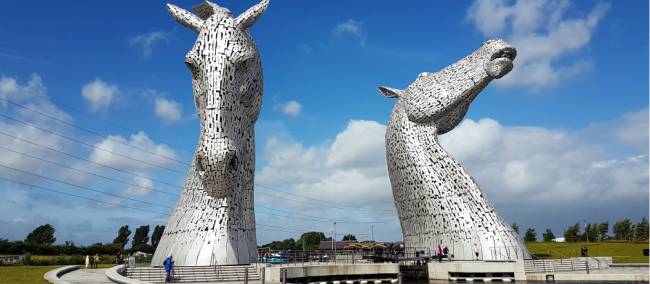
The iconic Kelpies on the John Muir Way
Blog home / 10 Interesting Sights on the John Muir Way
Apart from the opportunity to follow in the footsteps of the ‘father of national parks’, there are plenty of other reasons to walk what is known as Scotland’s Coast to Coast. The John Muir Way stretches for 134 miles (215km) from Helensburgh in the West of Scotland to Durban in the East, making it one of Scotland’s best known long distance trails. With so much length to cover, you conveniently will walk past many fascinating sights that make the John Muir Way a truly interesting walk to undertake.
From John Muir’s hometown and a Roman wall to the heritage of famous war poets and the world’s biggest Northern Gannet colony, read on for a sneak preview of the fascinating sights you will encounter along the John Muir Way.
1. John Muir’s Port of Departure
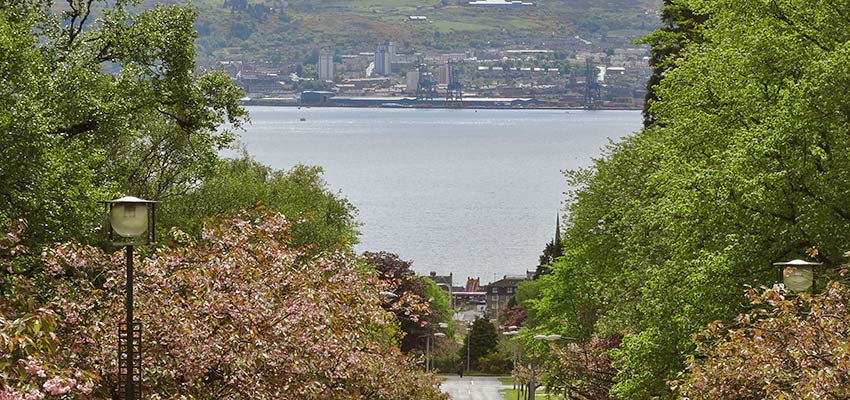
Handsome buildings, wide elegant tree-lined streets, a long promenade and attractive parks & gardens create a pleasantly distinguished atmosphere in Helensburgh. It is from this town that the Muir family is said to have left to go to the USA. The town operated the world’s first steamship ferry service in 1812 and reputedly a quarter of Britain’s millionaires resided in this handsome holiday resort during Victorian times.
2. Carbeth Chalets

After World War I local land owner, Barnes Graham, gave land near Glasgow to returning soldiers. The idea was for them to be able to build summerhouses so they could get some fresh air away from the city. The scheme at the time attracted socialists and communists and during WWII it was here that many people took refuge at the time of the Clydebank Blitz. Today, the low-impact lifestyle that people at the Carbeth Chalets follow is highly-prized and protected.
3. Kirkhouse Inn

Originally built in 1601 as a stables and tavern, the Kirkhouse Inn has undergone several transformations over the years and has had its fair share of scandals and hidden treasures, even the sighting of a ghostly aberration! The Kirkhouse was the scene of secret correspondence between King James VI of Scotland and Queen Elizabeth I of England that eventually led to the Union of the Crowns.
4. The Antonine Wall
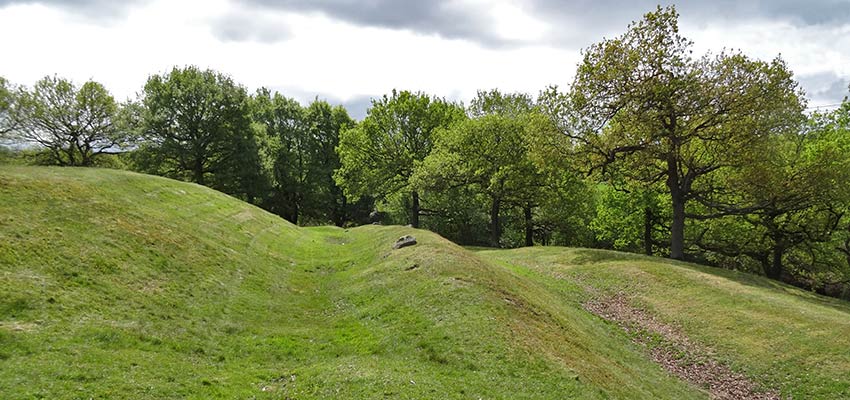
The northern-most limit of the Roman Empire stretched all the way to present-day Scotland. Like the better-known Hadrian's Wall to the south, it formed a solid barrier right across the country. The northern boundary can still be seen today when walking the John Muir Way and passing the Antonine Wall and Kirkintilloch fort. This is now a designated World Heritage Site. The Wall's location is prominently shown. A high mound in the park marks the site of a mediaeval castle whose moat still survives.
5. Falkirk Wheel
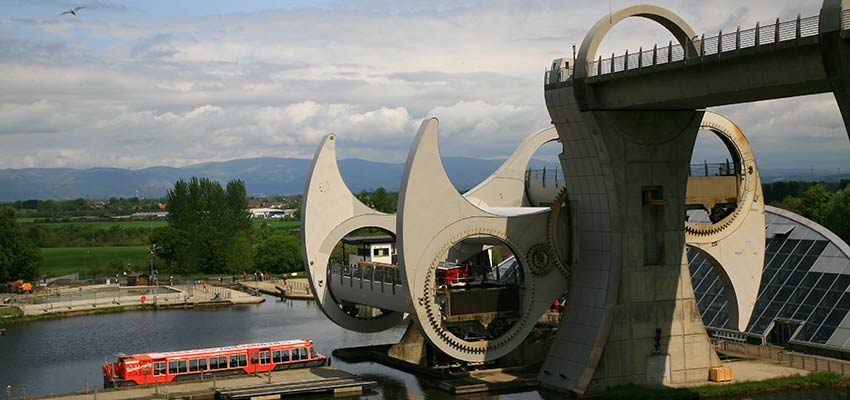
Opened in 2002, this is the world’s only rotating boatlift and an ‘engineering icon throughout the globe.’ Falkirk Wheel reconnects the canal of Forth and Clyde with the Union Canal for the first time since the 1930s and is part of the Millennium Link project. Inspirations for the design include a double-headed Celtic axe, the propeller of a ship and the ribcage of a whale.
6. The Ship that Never Sailed

Blackness Castle is one of Scotland's most impressive strongholds. It was built in the 15th century by one of Scotland's most powerful families. Since it became crown property in 1453, the castle on the John Muir Way served as a state prison, one of the most advanced artillery fortifications of its time in Scotland, and ammunition depot. Because of its site and shape, Blackness Castle has been characterised as "the ship that never sailed".
7. The Kelpies
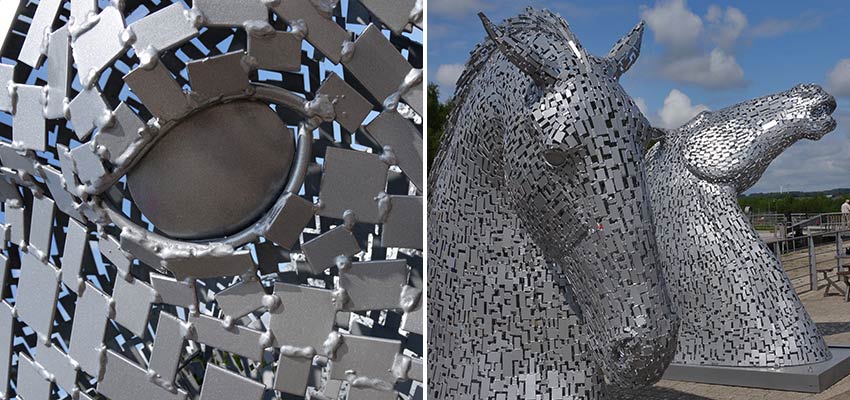
Created by Scotland’s leading sculptor Andy Scott, The Kelpies are a monument to horse powered heritage across Central Scotland. They stand 30 metres tall and as such are the largest equine sculptures in the world. The Kelpies form a dramatic gateway to the canal entrance on the east coast of Scotland and you can take a tour to experience the horses from the inside.
8. Bass Rock

This is the biggest Northern gannet colony in the world, home to over 150,000 gannets at the peak of the season. The gannets spend most of the year on the Bass Rock, until the end of October. The lower ledges of the Bass are home to shags, guillemots and razorbills, with seals hauling up on the rocks below. All in all, a unique spot to take in on your John Muir Way walking trip.
9. The Haar

Along the Firth of Forth and down the coast to Dunbar, you may have to contend with ‘The Haar’. In good weather and low winds, it can give the impression that you are suddenly having terrible weather with fog banks and grey drizzly cloud. It is not an optical illusion; The Haar is a cold sea fog and usually occurs on the east coast Scotland between April and September.
10. Craiglockhart War Hospital

Fans of war poets will be interested to know that when taking a little extra walk on the John Muir Way, you can end up at ‘Edinburgh Napier University.’ This was the famous Craiglockhart Psychiatric Hospital where Wilfred Owen and Siegfried Sassoon met in the First World War. Their poems appeared in the hospital's own magazine called ‘The Hydra’ and were the inspiration for several books and a movie.
For more information on walking the John Muir Way, the exact route and inclusions, please have a look at the trip page or get in touch with our team of travel experts in London.